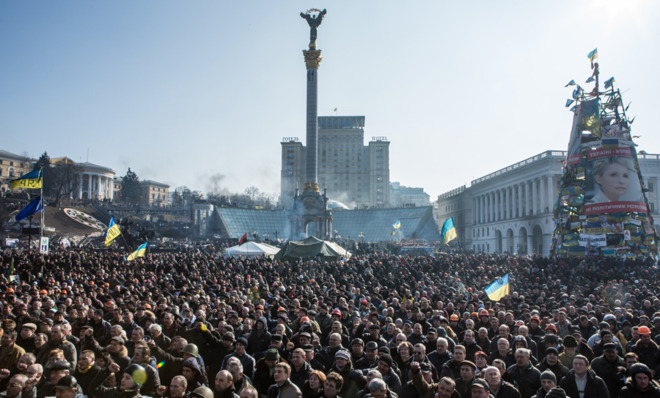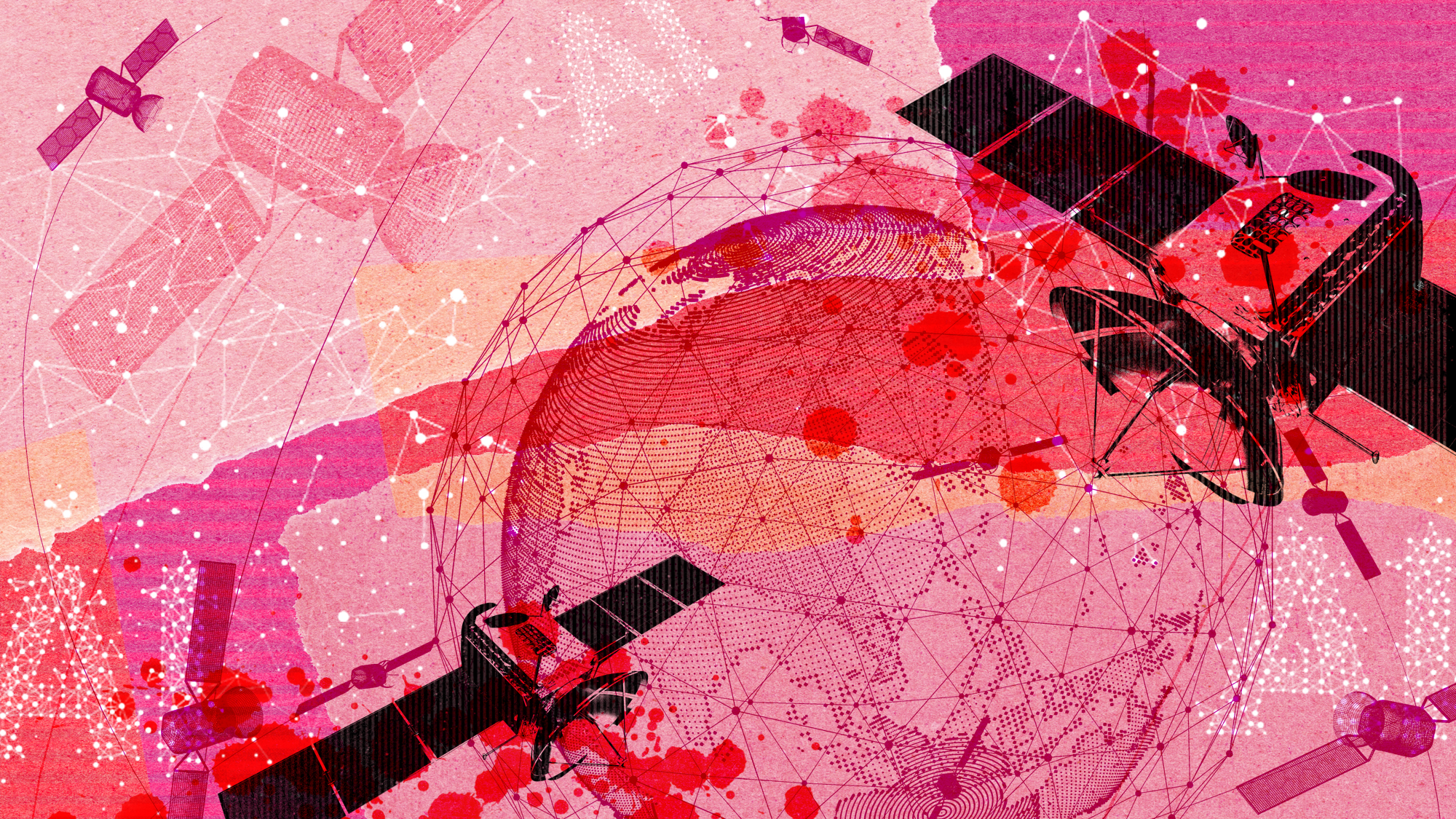What authoritarian regimes will learn from the Ukraine protests
Embattled rulers will probably take away some sad truths from protests in Kiev and Caracas


The rights of free speech and assembly are bedrock principles in the United States, enshrined in the Constitution's Bill of Rights and (mostly) upheld in 200 years of judicial decisions. That's not to say that those rights are absolute or have been universally upheld — along with its near-century of legal slavery, the U.S. has its own history of police crackdowns, from the Chicago Haymarket affair to the 1960s civil rights marches to the New York City protests against the 2004 Republican National Convention. But all in all, America's record is pretty good.
So in America it's unsettling to say it, but a disturbingly plausible lesson from the last decade or so of global political protests is that authoritarian-minded leaders stay in power much longer if they violently quash dissent before it has a chance to take root.
It's much nicer to believe that peaceful mass protests lead to the near-bloodless toppling of authoritarian regimes and the flowering of democracy. And sometimes they do, eventually. If enough people in a country are disaffected, and enough people turn out to protest, there's a good chance the balance will shift at some point: Witness the "color" revolutions that overthrew a few governments in Eastern Europe and the Balkans in the mid-2000s.
The Week
Escape your echo chamber. Get the facts behind the news, plus analysis from multiple perspectives.

Sign up for The Week's Free Newsletters
From our morning news briefing to a weekly Good News Newsletter, get the best of The Week delivered directly to your inbox.
From our morning news briefing to a weekly Good News Newsletter, get the best of The Week delivered directly to your inbox.
Then, starting in late 2010, Arab Spring protests swept away entrenched leaders in Egypt, Tunisia, and Yemen. Tunisia is even moving toward some sort of democracy.
World leaders noticed. In Syria, Iran, and Bahrain, governments harshly cracked down on protests. The Syrian repression led to civil war, but President Bashar al-Assad is still in power, and will likely continue to be; the protests in Iran and Bahrain were successfully quashed.
Now, the world is witnessing large, violent protests in Ukraine and Venezuela. In Venezuela, President Nicolas Maduro — the less charismatic successor to the late Hugo Chavez — is sending in paratroopers to help put down anti-government protests that have flared across parts of the country for more than a week. In Kiev, one of the (temporary) casualties of the color revolutions, Viktor Yaunkovich, is president again, but after facing mass demonstrations, he's reportedly set to sign a peace deal that could knock him from power.
So far, at least six people have died in the Venezuela fighting. In Kiev, the official death toll from three days of Yaunkovich's crackdown is at least 77. Though a tentative peace deal has been announced by the government, gunfire can still be heard in the city, and on Thursday, government snipers even reportedly shot protesters in the head. Many in the opposition say they won't back down unless Yaunkovich steps down — and even then it's not certain if the protests will completely abate.
A free daily email with the biggest news stories of the day – and the best features from TheWeek.com
The anti-protest actions have been "so harsh, and so contrary to what anyone expected, that they should lead us to abandon immediately some of the illusions we have long held" about the former Soviet bloc, said Anne Applebaum in The Washington Post — in late January, after the first violent crackdown in Kiev. "First and foremost, it’s time to abandon the myth of the 'color revolutions."
Yankovich and other "corrupt oligarchs, backed by Russian money and Russian political technology, are a lot stronger than anyone ever expected them to be," Applebaum says. "They have the cynicism to revive the old Soviet technique of selective violence: One or two murders are enough to scare off many thousands of demonstrators; one or two arrests will suffice to remind businessmen who is boss."
Julia Ioffe, at The New Republic, is bleaker still. Yaunkovich's recent crackdown is probably too little, too late, and Russia's Vladimir Putin "is watching Ukraine very closely and shaking his head," Ioffe says. "Instead of swiftly clearing the protests before they had a chance to gather momentum and not allowing them into the political system, Yanukovich dithered, thereby weakening himself." In contrast, Putin has violently suppressed any dissent, she adds, and "look at Putin's Moscow":
The opposition has been fractured and scattered to the winds. They pose no clear or present danger to Putin's rule. Moscow traffic moves as much as traffic in Moscow can move. There are no hobo opposition camps, no barricades. Moscow, to the stranger's eye, has no complaints. This is Putin's coveted stability in action, and it is in stark contrast to the lack of it in Kiev. Moscow's liberals are watching Kiev with a mix of horror, envy, and admiration: They're just like us, but look at what they've been able to do against a president they didn't like. [New Republic]
This isn't a new lesson: Monarchs and autocrats of all stripes have been violently suppressing dissent ever since there have been monarchies and autocracies. But it has become increasingly hard to forcefully crack down on protests since the advent of the modern news media — Gandhi, for example, could topple the British Empire through nonviolent resistance and barrels of ink.
The media is still the best tool mass protests have when trying to change a government or its policies. But it doesn't carry the same weight — we have seen so much violence, the threshold for outrage is higher. At the same time, the ubiquity of cameras and social media channels adds incentive to nip protests in the bud — the disappearance of a few peaceful demonstrators will get buried in the news cycle and Twitter feed faster than a fiery, blood-soaked inferno.
And what are the consequences for crackdowns? In the few countries dependent on direct U.S. aid — think: Egypt — the U.S. has some leverage. But the world's dominant military power isn't going to send troops into Kiev or Caracas. American force might have been a threat after the Balkans War in the 1990s, but after 12 years of bloodshed in Afghanistan and Iraq, the American appetite for even minimal intervention in Syria was so low that President Obama pulled the plan.
I doubt Yaunkovich or Maduro wants to send troops to kill their citizens. But it would not be an unlikely response, given recent history. On the other hand, the blood shed at the hands of police boosted popular support for the Ukrainian protestors, who have enlisted the help of the E.U. to negotiate with the government. In Venezuela, the demonstrations — fueled by rising prices, a shortages of basic supplies, and high crimes rates — could still be resolved peacefully, or result in armed conflict.
The success or failure of mass protests hinges on too many factors to be formulaic. There are lots of political, economic, and cultural differences between Ukraine and, say, China — which, for example, effectively killed a budding protest movement by sending tanks into Tiananmen Square in 1989, but has slowly been liberalizing ever since.
But the next time an embattled ruler sees a peaceful, popular uprising start to gel at home, it's likely that the battles of Kiev, Caracas, and Cairo will enter his calculations.
Peter has worked as a news and culture writer and editor at The Week since the site's launch in 2008. He covers politics, world affairs, religion and cultural currents. His journalism career began as a copy editor at a financial newswire and has included editorial positions at The New York Times Magazine, Facts on File, and Oregon State University.
-
 Has Zohran Mamdani shown the Democrats how to win again?
Has Zohran Mamdani shown the Democrats how to win again?Today’s Big Question New York City mayoral election touted as victory for left-wing populists but moderate centrist wins elsewhere present more complex path for Democratic Party
-
 Millions turn out for anti-Trump ‘No Kings’ rallies
Millions turn out for anti-Trump ‘No Kings’ ralliesSpeed Read An estimated 7 million people participated, 2 million more than at the first ‘No Kings’ protest in June
-
 Ghislaine Maxwell: angling for a Trump pardon
Ghislaine Maxwell: angling for a Trump pardonTalking Point Convicted sex trafficker's testimony could shed new light on president's links to Jeffrey Epstein
-
 The last words and final moments of 40 presidents
The last words and final moments of 40 presidentsThe Explainer Some are eloquent quotes worthy of the holders of the highest office in the nation, and others... aren't
-
 The JFK files: the truth at last?
The JFK files: the truth at last?In The Spotlight More than 64,000 previously classified documents relating the 1963 assassination of John F. Kennedy have been released by the Trump administration
-
 'Seriously, not literally': how should the world take Donald Trump?
'Seriously, not literally': how should the world take Donald Trump?Today's big question White House rhetoric and reality look likely to become increasingly blurred
-
 Will Trump's 'madman' strategy pay off?
Will Trump's 'madman' strategy pay off?Today's Big Question Incoming US president likes to seem unpredictable but, this time round, world leaders could be wise to his playbook
-
 Democrats vs. Republicans: who are US billionaires backing?
Democrats vs. Republicans: who are US billionaires backing?The Explainer Younger tech titans join 'boys' club throwing money and support' behind President Trump, while older plutocrats quietly rebuke new administration



